ASUS Republic of Gamers and X79 ROG Review – Rampage IV Gene, Formula and Extreme
by Ian Cutress on August 3, 2012 1:00 PM EST- Posted in
- Motherboards
- Asus
- X79
- ROG
Civilization V
Civilization V is a strategy video game that utilizes a significant number of the latest GPU features and software advances. Using the in-game benchmark, we run Civilization V at 2560x1440 with full graphical settings, similar to Ryan in his GPU testing functionality. Results reported by the benchmark are the total number of frames in sixty seconds, which we normalize to frames per second.
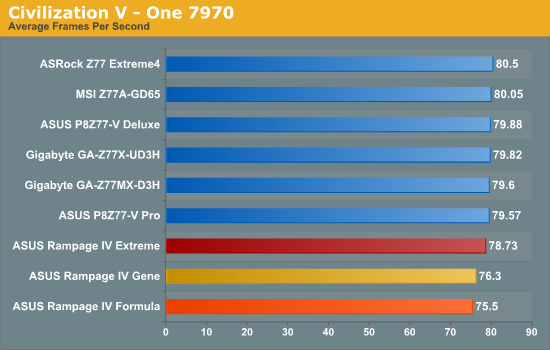
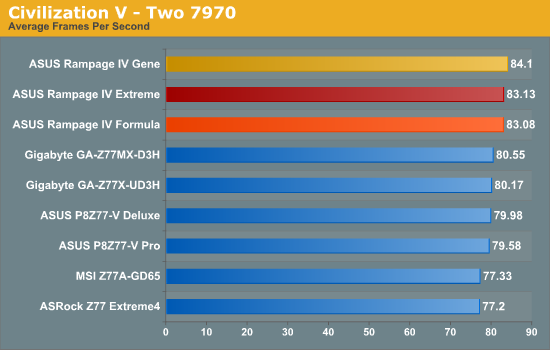
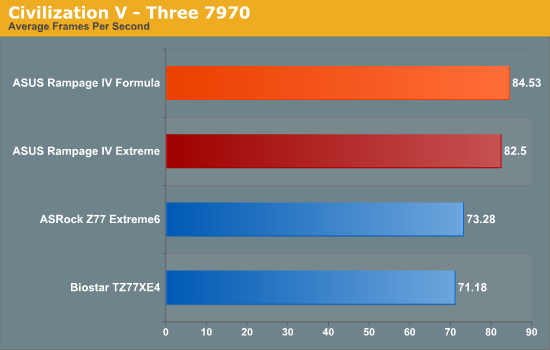
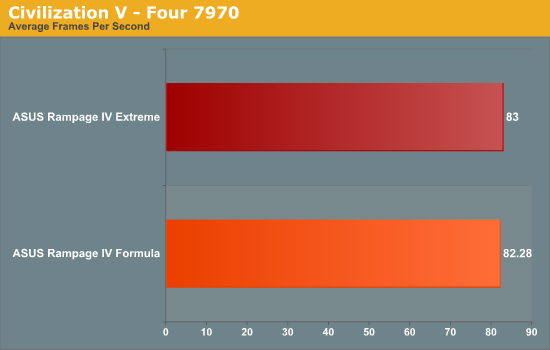
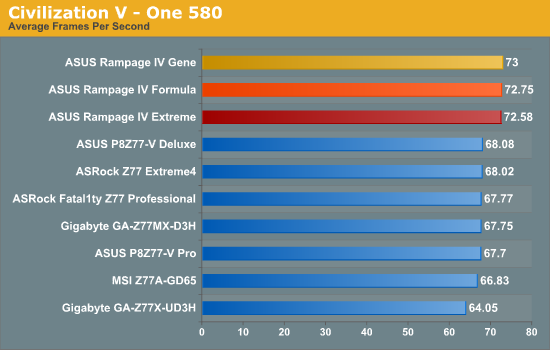
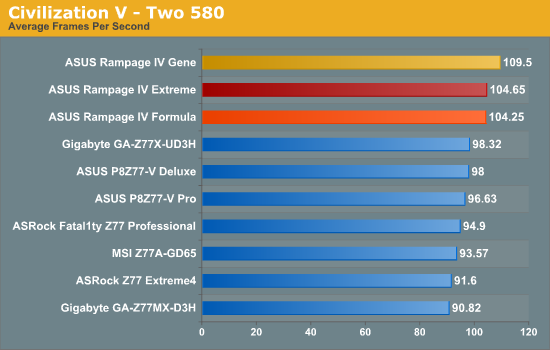
For Civilization V, the ROG boards get ahead at 2560x1440 when more GPU power is under the hood - this means two or more AMD cards, or any number of NVIDIA cards. Note that Civilization V does not scale well with AMD, but the X79 platform is best suited to deal with this situation.
Dirt 3
Dirt 3 is a rallying video game and the third in the Dirt series of the Colin McRae Rally series, developed and published by Codemasters. Using the in game benchmark, Dirt 3 is run at 2560x1440 with full graphical settings. Results are reported as the average frame rate across four runs.
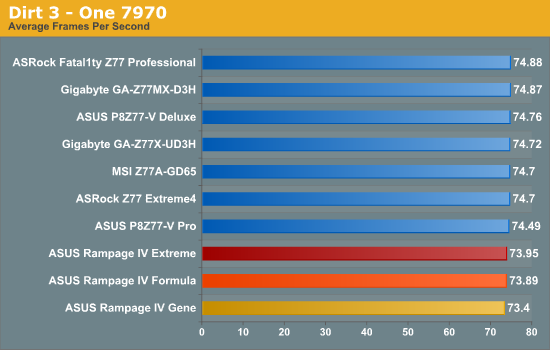
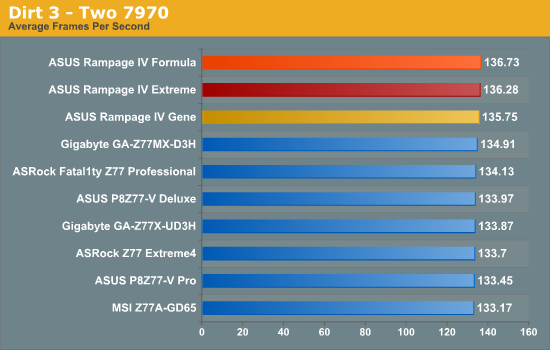
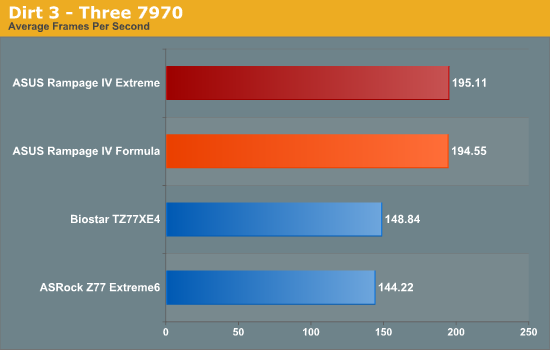
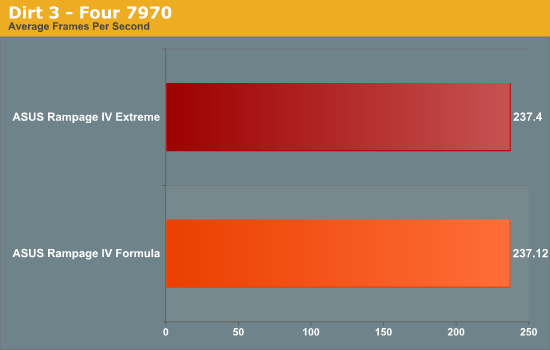
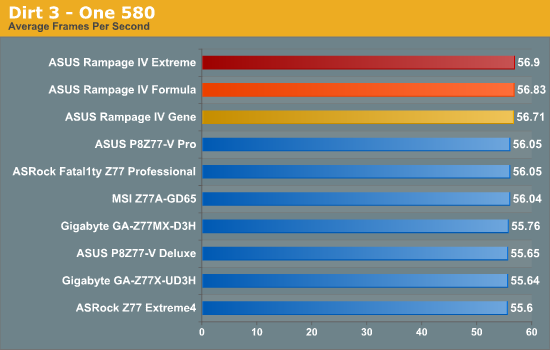
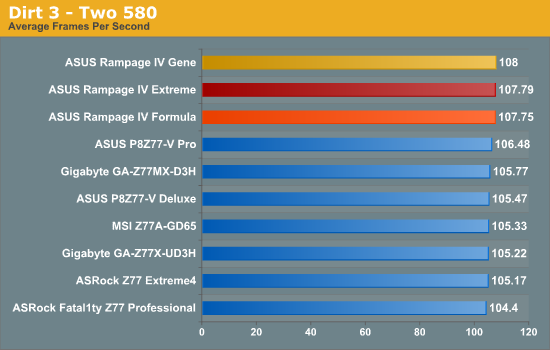
Similarly to Civilization V, the ROG boards perform best when more GPU power is in the system for Dirt 3. Dirt 3 scales very well with GPU power and loves memory bandwidth, so for two or more 7970s (or any number of NVIDIA cards), the ROG boards pull ahead (even if only by the most minute of percentages).
Metro2033
Metro2033 is a DX11 benchmark that challenges every system that tries to run it at any high-end settings. Developed by 4A Games and released in March 2010, we use the inbuilt DirectX 11 Frontline benchmark to test the hardware at 2560x1440 with full graphical settings. Results are given as the average frame rate from 10 runs.
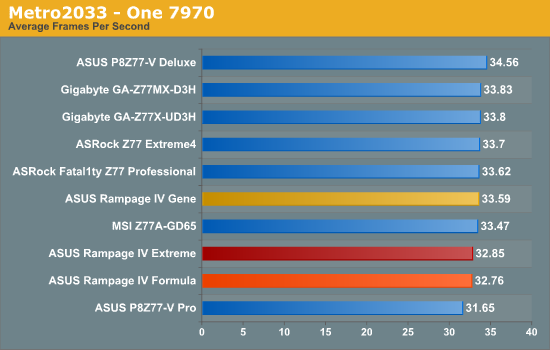
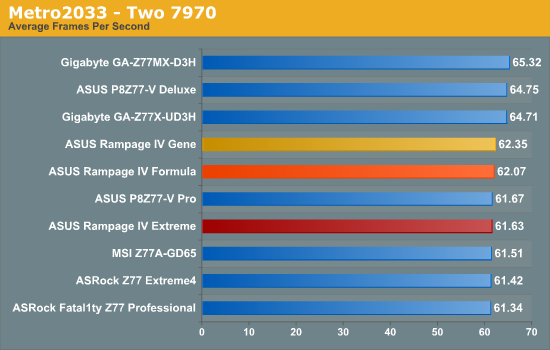
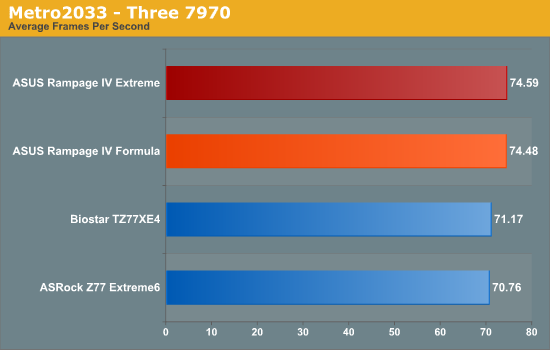
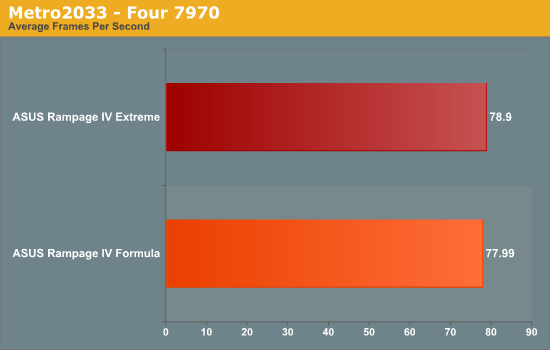
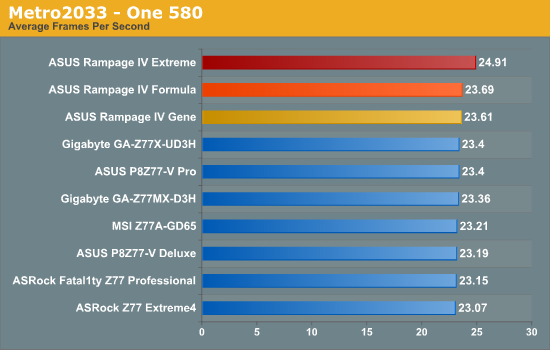
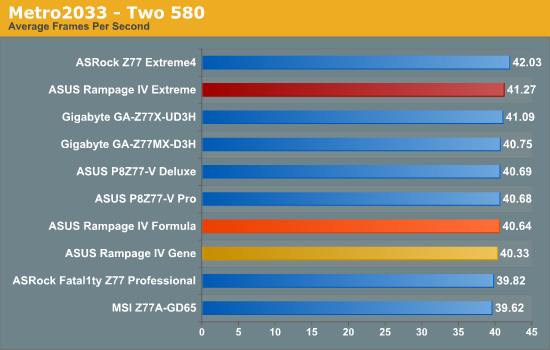
Metro 2033 seems unbothered by which platform is used - only by what GPUs are being used.










34 Comments
View All Comments
Flunk - Friday, August 3, 2012 - link
Ivy Bridge is more of a notebook oriented update anyway. The much better integrated graphics don't really matter to us anyway.G-Man - Friday, August 3, 2012 - link
Fantastic article, Ian! You must have been working on this for a long time. Thanks for a great read.B - Friday, August 3, 2012 - link
Ian -I would like to point out that under that nice metal Creative X-FI chip badge is, in fact, a Realtek processor. The Soundblaster piece of this is a merely a software implementation. I have this motherboard and was quite disappointed to discover this.
Thanks for great and thorough article.
just4U - Friday, August 3, 2012 - link
Indeed.. It's a little bit of a letdown. It will be nice if they are pushed away from the realtek chip now that Gigabyte is into similiar type boards which utilize the Creative recon chips.primonatron - Friday, August 3, 2012 - link
The article should be edited to specificy that it's only a Relatek chip, not a Creative one, at this point it's just blatent false advertising.When doing the review, did Anandtech actually do a Windows 7 install on it themselves?
They would have known if they did.
IanCutress - Friday, August 3, 2012 - link
As per my comment above, it states this in the tenth page. And yes, I do install Windows 7 fresh on every board I test. It would be crazy not to. I see the whole install procedure at least twice a week, as well as installing each vendors drivers and software. The ASUS install procedure for drivers is all one-button automatic, no user input required, no giant screens flashing up on the screen to ask to confirm this that or the other.Ian
primonatron - Friday, August 3, 2012 - link
I would not put " ASUS have dug into their pockets to provide the Gene with a better-than-Realtek solution, in the SupremeFX III" since it IS a Realtek solution.IanCutress - Friday, August 3, 2012 - link
Written in page 10:"In our SupremeFX III, we essentially get a Realtek codec (presumed ALC898), but by being stage III this chip is isolated from the rest of the board, has a separate EMI shield around the chip, its own PCB layer for audio tracing, a 1500 mF capacitor to reduce ripple, and gold plated audio jacks to minimize resistance. As a result, the SNR is increased to 110dB."
Ian
just4U - Saturday, August 4, 2012 - link
It also needs to be noted that soundchips getting decent software can be a fairly substantial bump.. atleast from my point of view. I seem to recall Creative nailing a company to the wall because they used software the emulated soundblaster stuff and they were reall popular 7 years back.just4U - Friday, August 3, 2012 - link
I've been using these for several years... and have always found that they offer more then most standard ATX boards in lesser and similiar price ranges. Your not paying the Big bucks but you have your foot in the door.. (as it were.. lol)They can be problematic at times mind you.. I've found that quality control can be a bit of an issue with dead boards coming in now and again. We are dealing with sensitive electronics mind you so that happens.
I must say they do have some competition now with Gigabyte's M3s sniper boards, that do utilize a true recon3d sound chip from Creative (as opposed to a realtek chip with software emulation). My hope is that it pushes Asus towards a similiar move as the sound is a key feature for these baby boards.
Personally I think the Gene series deserves your silver award. While high end boards can be had from all makers getting a good solid feature rich gaming MATX board is not the norm and they are almost allways a pleasure to work with.
Great review Ian.